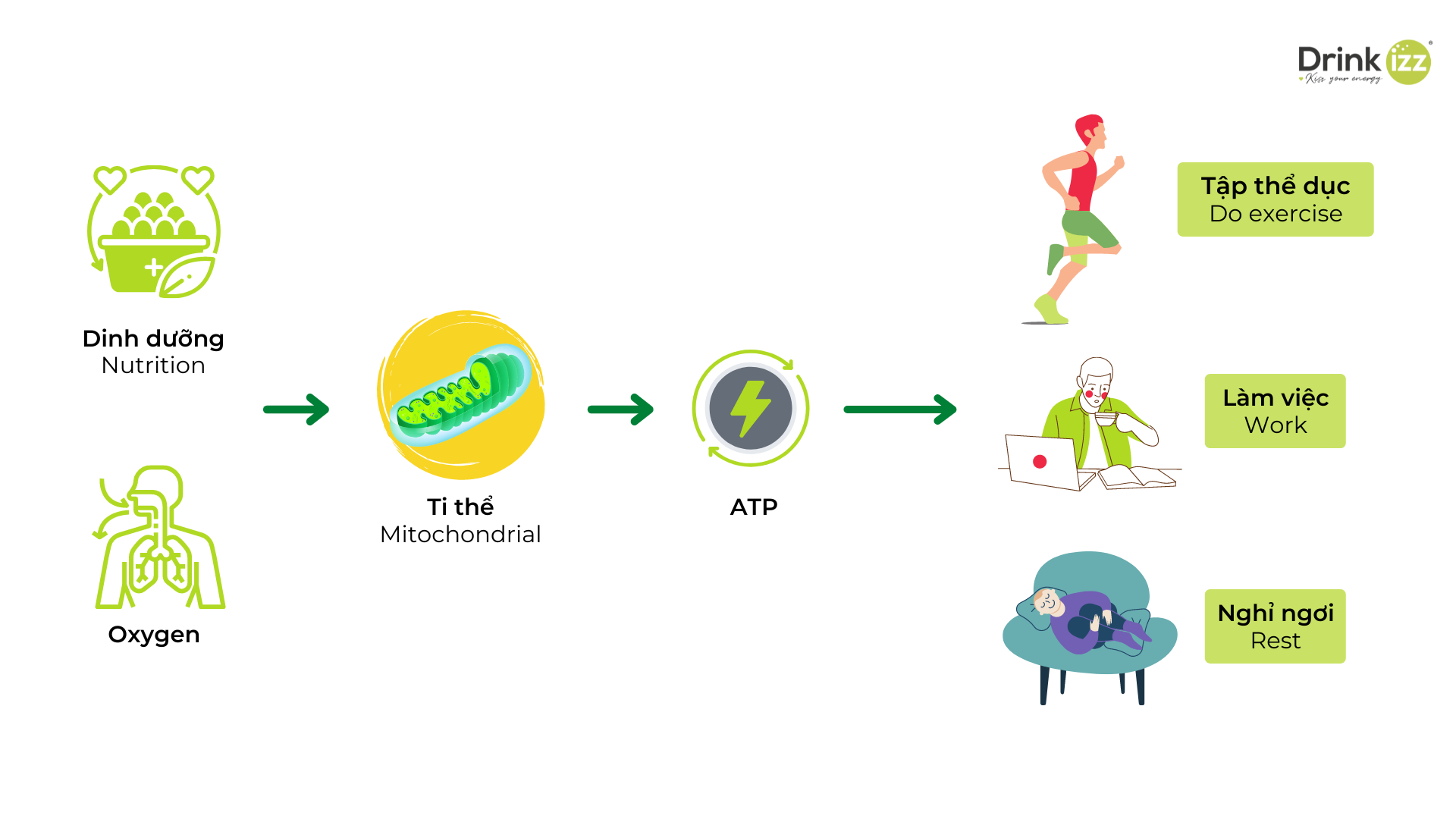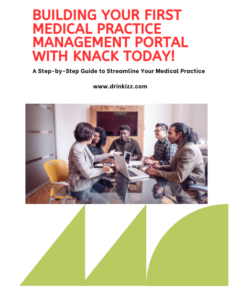The era of digitalization and the Covid 19 pandemic have continuously put our lives under enormous pressure. That is why we are becoming increasingly stressed out and can not have time for listening to and taking care of ourselves, which negatively affects how we breathe. If you constantly feel tired, lack energy, and are looking for a solution, this article is the gift that Drinkizz and Tam – a Yoga and Meditation Coach give you! Let’s find out together!
1. What is breath? Why does breathing help create energy?
At the body level, breathing is the process of taking in oxygen and releasing carbon dioxide into the environment through the respiratory organs, the lungs. At the cellular level, this process is called cellular respiration and takes place mainly in the mitochondria, which are often referred to as the powerhouses of the cell.
Cellular respiration uses oxygen from breathing and the chemical energy contained in nutrients to form adenosine triphosphate (ATP). ATP is the energy used for every vital activity of cells and the body.
The raw materials for cellular respiration are glucose and oxygen. Glucose is taken from daily food, while oxygen is provided through breathing.
Now we have the following general equation:
C6H12O6 + 6O2 => 6CO2 + 6H2O + Energy (38 ATP + Heat)

We can see that one glucose molecule is burned with six molecules of oxygen to produce six molecules of carbon dioxide, six molecules of water, and 38 molecules of ATP (energy). So, without oxygen from breathing, mitochondria cannot produce energy to support the vital functions of cells and the body.
2. What happens if we lack oxygen?
Lacking oxygen due to weak breathing will result in mitochondria not producing enough energy. Without adequate energy, all body systems cannot work effectively.
Here are some adverse effects from lack of oxygen due to weak breathing:
Firstly, fatigue because of lack of energy. (1)
When your breathing is weak, not enough oxygen is taken in so that mitochondria will produce energy in anaerobic conditions (lacking oxygen). However, the amount of energy generated from this process is minimal. Typically, one glucose molecule manufactures 38 ATP molecules (energy) under aerobic conditions (using oxygen), but only 2 ATP molecules are generated under anaerobic conditions.
Secondly, impaired body functions. (2)(3)(4)
- Every organ in the body needs an adequate amount of energy to function correctly. This energy comes from mitochondria. Without oxygen, the mitochondria in each organ would not be able to provide enough energy for that organ to function.
- For example, if the mitochondria in heart cells lack oxygen, they won’t be able to generate enough energy for the heart muscle tissue to contract. This problem causes the blood flow not to be adequately pumped to other organs, leading to weakness.
Thirdly, weight gain due to fat accumulation.
When the glucose molecules in the cells are not burned because of a lack of oxygen, the cells will stop receiving glucose in the blood, which results in glucose being converted into fat for storage. (6)(7)(8)
Fourthly, muscle pain.
Under anaerobic conditions, the energy-generating process produces lactic acid. High levels of lactic acid accumulation will lead to sore muscles. (1)(8)
In addition, poor breathing and lack of oxygen is also a cause of aging and many other diseases.

3. How to breathe correctly if you are constantly on the go?
Before moving on to breathing exercises, remember following simple tips so that you can master breathing even if you are always up to your neck in tons of deadlines and responsibilities:
- Set a watch or phone to remind you every 25 minutes.
- When the bell or music sounds, let’s stop working for a few minutes (if possible) to relax the whole body, listen to your breath, or stand up and move around for about 5 minutes.
And now, let’s go to the series of exercises “Natural Breathing”!
EXERCISE 1: FULL BODY RELAXATION
STEP 1: SIT IN A GOOD POSTURE
You can sit on a chair or sit on the floor.
Sitting on a chair:
- Your feet are flat on the floor. Your head lines up with your neck and back while hands placed on thighs, relaxed.
- Open your shoulders, relax and lift your chest slightly.
Sitting on the floor:
- Cross your legs comfortably. Your head lines up with your neck and back while hands placed on thighs, relaxed.
- Open your shoulders, relax and lift your chest slightly.
STEP 2: RELAX COMPLETELY AND OBSERVE YOUR BREATH
Start watching your breath come in and go out naturally. Notice whether the breath is coming in or going out or stopping, one breath at a time. Even better, you can observe whether your breath is long or short, shallow or deep, strong or weak.
*Note: let your breath in and out naturally. That means you should not use force to adjust or control your breath.
In this first breathing exercise, your goal is to observe the natural breath, so nothing but the breath is essential. If your mind is distracted by any other objects, bring your focus back to the breath.
EXERCISE 2: DEEP BREATHING
STEP 1: USE YOUR BELLY (BELLY BREATHING) AND HOLD YOUR BREATH
- Following the natural rhythm of breath, when the air comes in, lengthen your breath a little more as long as you still feel comfortable. Then relax, let the air pass out of your lungs automatically. Just like that, keep practicing: when you inhale, the abdomen expands, and when you exhale, the abdomen flattens.
- When you get used to prolonging your breath, you can practice holding your breath for a few seconds between the two phases: inhalation and exhalation.
STEP 2: INVOLVE BOTH BELLY AND CHEST
- Breathe in, your belly will go up first, and continue to inhale even more deeply, then your chest will rise.
- Breathe out, feel your belly lower. At the same time, the chest falls gently and comfortably, releasing your stress and tension.
- After getting used to breathing deeply by both abdomen and chest, practice holding your breath between inhalations and exhalations.
References:
- https://en.wikipedia.org/wiki/Cellular_respiration
- https://my.clevelandclinic.org/health/diseases/17727-hypoxemia
- https://www.medicalnewstoday.com/articles/322803
- https://www.spinalcord.com/blog/what-is-hypoxia-and-why-is-it-so-dangerous
- https://www.diabetes.co.uk/body/glycogen.html
- https://healthcare.utah.edu/the-scope/shows.php?shows=0_7frg4jjd
- https://www.uofmhealth.org/health-library/uq1238abc
- https://www.livescience.com/lactic-acid.html






